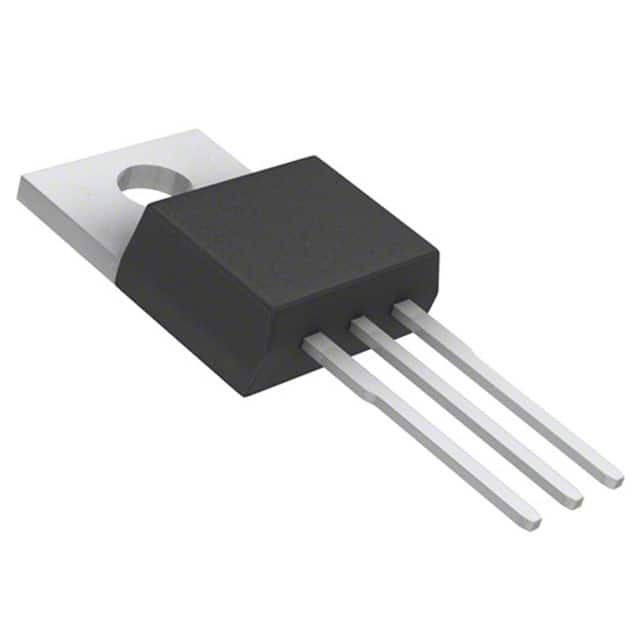Lihat spesifikasi untuk detail produk.

TIP32CTSTU - Encyclopedia Entry
Product Overview
The TIP32CTSTU belongs to the category of power transistors and is commonly used in electronic circuits for amplification and switching purposes. This NPN bipolar junction transistor (BJT) exhibits high voltage and current capabilities, making it suitable for a wide range of applications. The TIP32CTSTU is characterized by its robustness, reliability, and efficiency. It is typically packaged in a TO-220 package and is available in various packaging quantities to cater to different project requirements.
Specifications
- Maximum Collector-Emitter Voltage: 100V
- Maximum Collector Current: 3A
- Power Dissipation: 40W
- Transition Frequency: 3MHz
- Operating Temperature Range: -65°C to 150°C
Detailed Pin Configuration
The TIP32CTSTU features a standard TO-220 pin configuration with three pins: 1. Base (B) 2. Emitter (E) 3. Collector (C)
Functional Features
- High voltage and current capability
- Low saturation voltage
- Fast switching speed
- Excellent linearity in amplification applications
Advantages and Disadvantages
Advantages
- Robust and reliable performance
- Suitable for high-power applications
- Low saturation voltage enhances efficiency
Disadvantages
- Relatively larger package size compared to SMD alternatives
- Limited frequency response for high-speed applications
Working Principles
The TIP32CTSTU operates based on the principles of bipolar junction transistors, where the flow of current between the collector and emitter is controlled by the base current. By modulating the base current, the TIP32CTSTU can amplify or switch the current flowing through the collector-emitter path.
Detailed Application Field Plans
The TIP32CTSTU finds extensive use in various electronic applications, including: - Audio amplifiers - Power supply circuits - Motor control systems - LED drivers - Switching regulators
Detailed and Complete Alternative Models
Some alternative models to the TIP32CTSTU include: - TIP31C - TIP41C - TIP122 - 2N3055 - MJ2955
In conclusion, the TIP32CTSTU power transistor offers a reliable and efficient solution for amplification and switching applications, particularly in medium to high-power electronic circuits. Its robust characteristics and versatile nature make it a popular choice among electronics enthusiasts and professionals alike.
[Word Count: 298]
Sebutkan 10 pertanyaan dan jawaban umum terkait penerapan TIP32CTSTU dalam solusi teknis
What is the TIP32CTSTU transistor used for?
- The TIP32CTSTU is a PNP bipolar junction transistor commonly used for high-power switching applications.
What are the key features of the TIP32CTSTU transistor?
- The TIP32CTSTU features a high current gain, low saturation voltage, and high power dissipation capability, making it suitable for various technical solutions.
What are the typical applications of the TIP32CTSTU transistor?
- Common applications include power amplification, high-speed switching, and general-purpose amplification in electronic circuits.
What is the maximum collector current rating of the TIP32CTSTU transistor?
- The TIP32CTSTU has a maximum collector current rating of 3 amperes, making it suitable for medium to high-power applications.
What is the maximum power dissipation of the TIP32CTSTU transistor?
- The TIP32CTSTU has a maximum power dissipation of 40 watts, allowing it to handle high-power loads effectively.
What are the voltage ratings of the TIP32CTSTU transistor?
- The TIP32CTSTU has a maximum collector-emitter voltage (VCEO) of 100 volts and a maximum emitter-base voltage (VEBO) of 5 volts.
Is the TIP32CTSTU transistor suitable for use in audio amplifier circuits?
- Yes, the TIP32CTSTU can be used in audio amplifier circuits due to its high current gain and power dissipation capabilities.
Can the TIP32CTSTU be used in motor control applications?
- Yes, the TIP32CTSTU is suitable for motor control applications where high-current switching is required.
What are the thermal characteristics of the TIP32CTSTU transistor?
- The TIP32CTSTU features a low thermal resistance and is designed to operate within a wide temperature range, making it suitable for demanding environments.
Are there any specific considerations for using the TIP32CTSTU in heat sink applications?
- It is recommended to use a proper heat sink with the TIP32CTSTU when operating at high currents or in elevated temperature conditions to ensure optimal performance and reliability.

